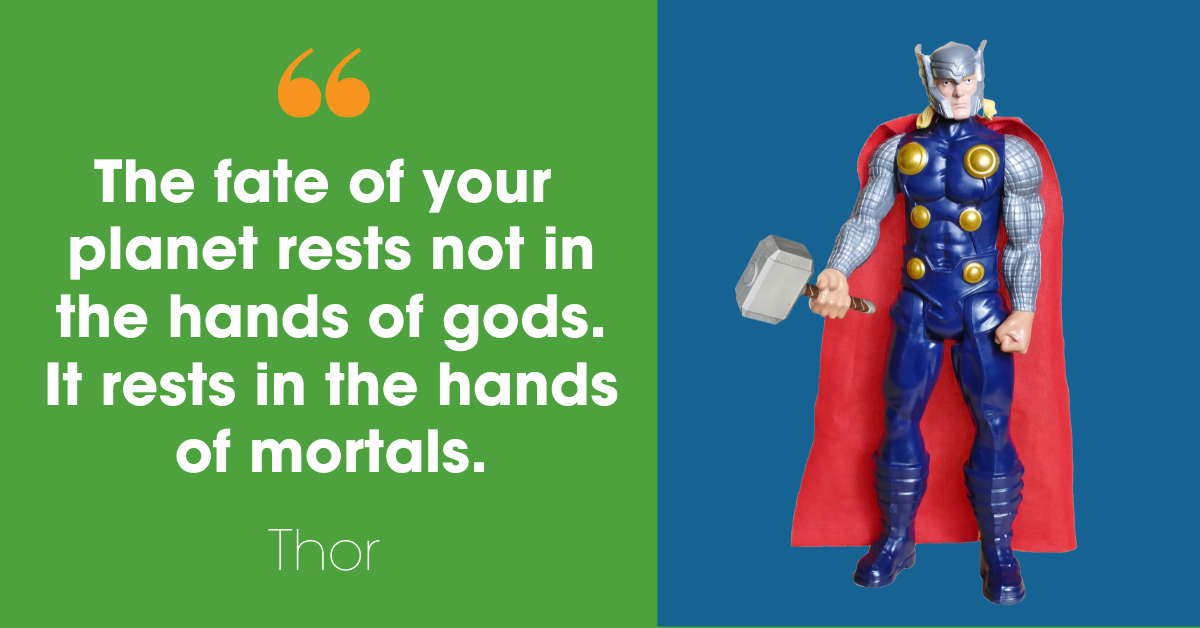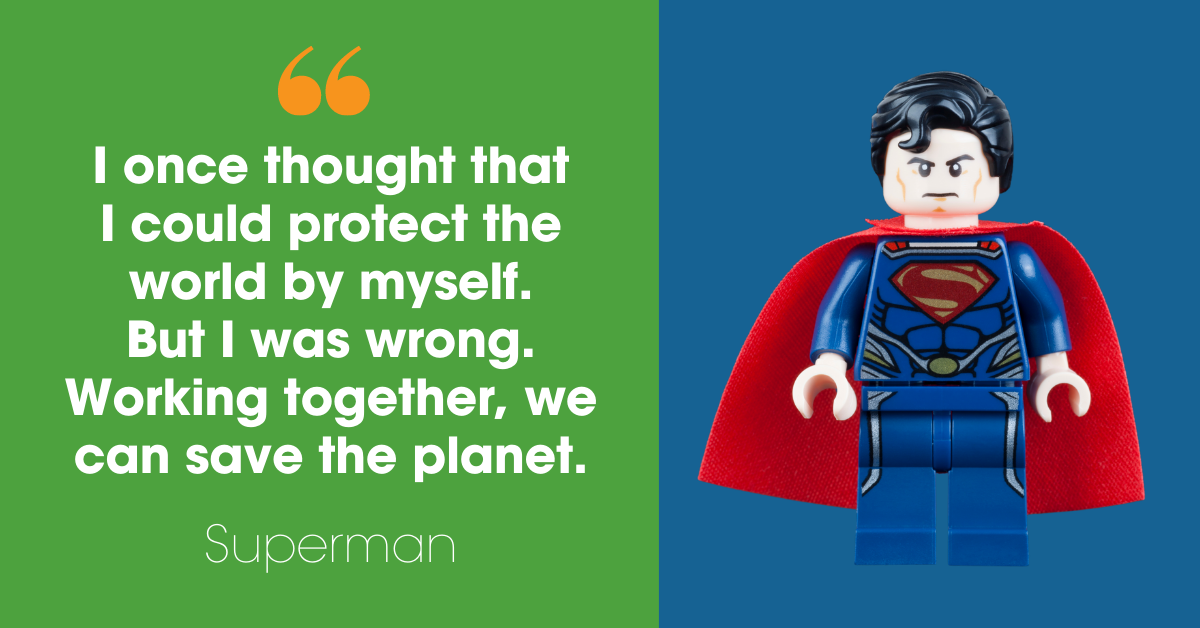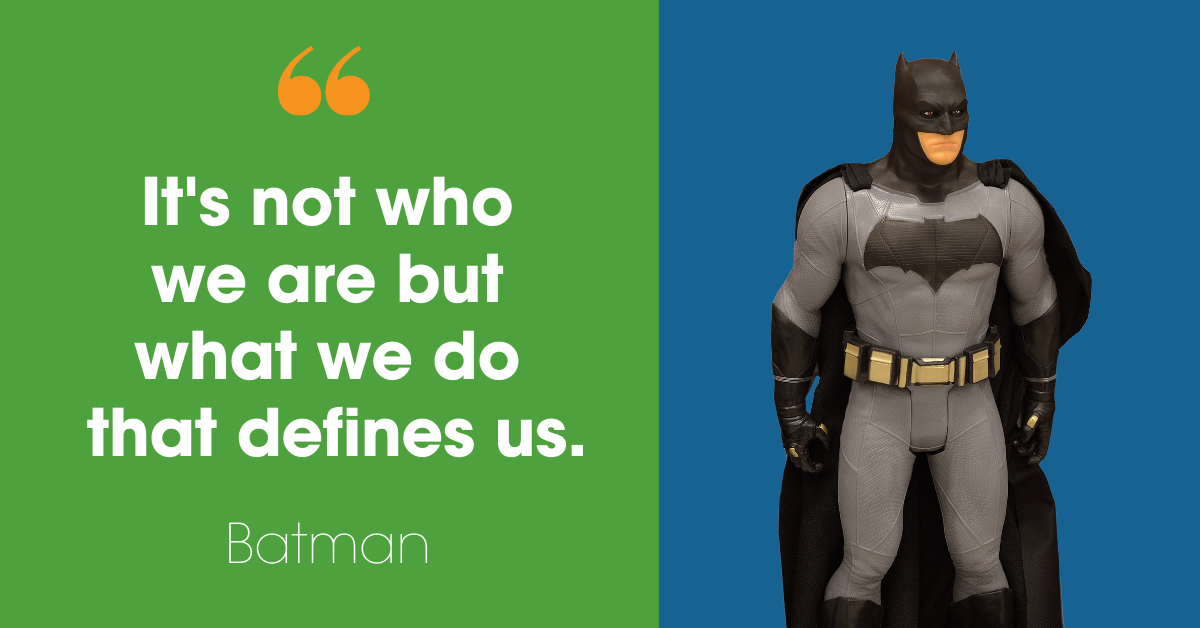To Sustainability and Beyond: Becoming a Green Lab Superhero
My name is Oisín C. Joyce, I am a PhD candidate in neuroscience at Trinity College Dublin, and if you are reading back over this sentence to try and figure out how to pronounce my name that’s more than okay as I have heard many iterations when people first meet me. My name meaning ‘little deer’ is derived from Irish folklore and is something I am very proud of. Since I was a child, I always wanted to be a superhero, however with age comes a sense of realism and perspective, so for now I have replaced the cape and cowl for a lab coat and pipette. I might not be apprehending bad guys on the streets of Gotham or leaping the tall buildings of Metropolis in a single bound, but I have discovered some practical ways to help make the world a better place. Although they may not be the dreams of my childhood, they are not unimaginable, just adapted to the world we live in and striving for the protection of our planet. As Superman once said: “So many of our dreams seem impossible, they seem improbable, and then, when we summon the will, they soon become inevitable.”
My doctoral research revolves around concussion and traumatic brain injury in sport, investigating the brain health of current and retired athletes and whether a sporting career of head and body impacts has an associative link to cardiovascular health and disease. With this comes a lot of time spent in the lab and at the benchside working on acquired clinical samples. Having always been concerned about what I could do each day to be greener and more conscious at home, it was only a matter of time before I started applying the same thought process to my work at the lab. It seemed I was the only scientist/researcher concerned by the amount of packaging that I would have to break down and recycle after an order for one small vial that could fit in the palm of my hand, or so I thought. Through onsite campus networking, I soon discovered I wasn’t the only one in the Trinity College Institute of Neuroscience (TCIN) that had similar concerns about lab sustainability practices, and I was keen to join the fight against needless waste and energy consumption.
Assembling a team of eco heroes
In February 2020, a movement was established at TCIN in the hope that greener lab practices could be adopted, and the My Green Lab certification could be achieved. The journey was catalysed by fellow PhD candidate Camilla Roselli, along with other staff members at TCIN, who were awarded funding to pursue green lab certification. When the opportunity arose to become a lab representative on the TCIN Green Lab committee and subsequently the TCD Green campus subcommittee, I jumped at the opportunity to be part of a group of like-minded researchers who were eager to battle for better lab sustainability. As a group we decided that outreach among staff, students, and researchers would be key to green and sustainable success, not only at TCIN but also across campus. In light of this, the ‘TCIN Green Lab Booklet’ was created to provide a provisional and working green guide to lab sustainability to achieve a greener and more environmental workplace for research and teaching to be conducted. The booklet itself consists of 11 sections including, but not limited to, infrastructure & energy, green chemistry, cold storage, waste management & recycling, water and purchasing.
Conserving our energy
Buildings of today’s era are designed to meet the requirements and needs of those who occupy and avail of them, based on all-encompassing principles of sustainability, and are environmentally friendly from start to finish including financial, social, economic, and institutional factors. However, most university labs and their users may not meet the current ‘green standards’ that are to be strived for in order to combat and bolster green economic growth. Almost half of a lab’s typical energy consumption is utilised by the air handling and ventilation systems, and lighting will account for a further 15% of energy consumption. Despite lab personnel not having complete control over the pivotal elements of infrastructure and energy, their behaviours and decision-making can certainly influence their impact and utilisation. Meeting the requirements for green and sustainable infrastructure and energy tends to fall short, not due to the actions and behaviours of staff and researchers, but due to a lack of education and awareness of the sustainable efforts already in place.
Some easy sustainable behavioural changes that can be made include:
- Turning off the lights in both the main lab and support rooms when they are not in use, significantly reducing the energy load
- Ensuring that the temperature is optimised for the lab equipment and personnel with energy conservation in mind
- Switch off and plug out all equipment in communal areas and during weekends and holidays to avoid standby energy consumption or “vampire energy drain”
- Print only when necessary and establish digital lab handbook’s and SOP’s
- Use laptops instead of desktops where possible
- Put computers in hibernation mode when on a break or at a meeting – standby mode can still use up to 50% of the energy they use when in operation
With ‘Green Chemistry’ comes green responsibility
Echoing the sentiments of my fellow green researchers, the use and awareness of ‘Green Chemistry’ abides by 12 principles in order to ensure optimal utility and reduce the potential hazardous and harmful outcomes to human health and the environment. As we discussed at length as a committee, many of these guiding principles are difficult to implement in a neuroscience lab, however, there are 5 principles that we agreed could and should be used where possible in all biological labs. These 5 principles include:
- Waste prevention
- Less hazardous chemical synthesis
- Designing for energy efficiency
- Purchasing safer chemicals
- Safer chemistry for accident prevention
Staying cool under pressure
Working in biological sciences, we as researchers know the importance of proper sample storage, which brings me to the final message of this blog regarding ‘Cold Storage’. Storing our samples in temperatures below ambient, whether that be by freezing, refrigeration, cryopreservation, or ultra-low temperature freezing, cold storage is the largest consumer of energy in the lab. With an ultra-low temperature freezer, or ‘-80’ to most researchers, consuming as much energy as a house, being vigilant to ensure the proper upkeep and efficiency of cold storage units is essential. Cleaning the coils and filters to increase heat exchange and defrosting your freezers can reduce energy consumption by 10% and is merely simple but effective which can be done regularly to ensure best practice. It may even be your conscious intention to ‘chill-up’ your -80 freezers to -70°C and reduce energy expenditure by up to 40%. If this is your decision, why not join many other labs globally by partaking in the International Laboratory Freezer Challenge and see if you and your colleagues are up to the challenge!
To sustainability and beyond
I hope that what I have shared above is both informative and useful to those who read it, and that the current sustainability efforts being carried out at Trinity College can serve as a catalyst for other institutions and research facilities to do more.
I encourage you to join the good fight, become an Eco Superhero and improve your lab’s efficiency to help save the planet! Your individual actions might feel small, but if each scientist musters the strength and courage to tackle the problems that lie ahead of us, we can each become the hero and protagonist of our own storylines.
And hopefully, some day, the world will thank us for it.
_________________________________________________
If you would like to chat or discuss all things neuroscience and sustainability, please don’t hesitate to connect with Oisín on LinkedIn or follow his Green Labs adventures on Twitter:
- LinkedIn: Oisín C. Joyce
- Twitter: @TCDgreenlabs
_________________________________________________
If you enjoyed this article, why not check out the other resources available on our blog. We are passionate about supporting life scientists, early career life scientists and PhD students - with really low- priced reagents and biochemicals, early career scientist grants, and resources to help with both personal and professional development. We know how tough it is - so we hope you find these helpful!
Advice & guidance for life scientists
Click below to view our essential guides and articles to support life scientists, PhD students & early career life scientists:
Wellbeing for scientists
Click below for our resources to help improve your wellbeing:
Technical resources
Try our Molarity Calculator: a quick and easy way to calculate the mass, volume or concentration required for making a solution.
Try our Dilution Calculator: an easy way to work out how to dilute stock solutions of known concentrations
And - when you get to the stage of planning your experiments, don't forget that we offer a range of agonists, antagonists, inhibitors, activators, antibodies and fluorescent tools at up to half the price of other suppliers - click below to see how we compare with other suppliers:






















